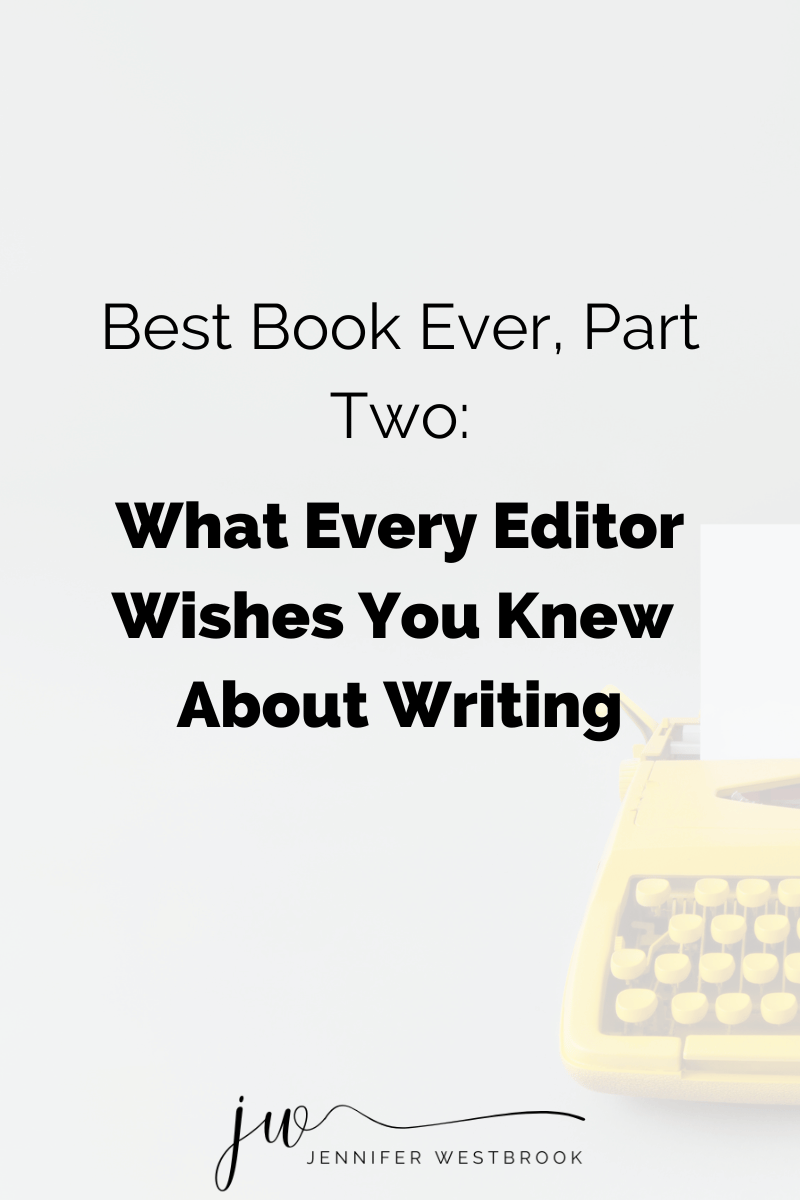Self-Publishing Your Book? Don’t Make These Mistakes
- Jennifer Westbrook

- May 16, 2019
- 5 min read
Updated: Jun 7, 2023
If you’re planning to self-publish your book, congratulations to you. It’s a bold move that says you’re serious about getting your message out to the world. And it’s courageous and empowering to forego the traditional publishing route so you can produce your masterpiece on your terms.

One of the best things about self-publishing is that you don’t have to go through a process as rigorous as you would if you were working with a large publishing house. In essence, you’re on your own.
But one of the worst things about self-publishing is that, well, you’re on your own.
Why is that problematic? Because without a major publishing house in your corner, you don’t have much accountability; you’re the one deciding what will fly and what won’t, and for many new authors, that means you’re skipping over some of the important checks and balances that large publishers offer.
And that can cause major problems for you, like low quality and embarrassing errors.
Many people who come to me for help have already self-published their book, and because they did everything on their own, they ended up with a less-than-stellar product.
And most of them found out that their book was in bad shape the hard way: people read their published work and gave them harsh feedback. And that crushing blow brings heartbroken authors to me, frustrated and eager to start over so they can fix and re-publish their books.
While I’m happy to help correct this situation, what I really want is to see new authors getting it right the first time so you can save time, spend less money, and avoid embarrassment. If you follow these tips, you’ll be well on your way to self-publishing a book that’ll make you proud.
1. Do Your Market Research
I know this has nothing to do with editing your manuscript. But here’s the thing: there’s no point in spending countless hours writing, editing and publishing a book that no one wants to buy. At the end of the day, you want people to buy your book, right? So spend some time evaluating the market viability of your concept.
Who is the audience for your book, and how will you reach them? How will your book stack up against the competition in your genre? How will your book be different? What do people expect in your genre in terms of length and tone?
Do your research and answer these questions first because you might discover that the book you thought was a great idea doesn’t have enough market potential to sell successfully. You may need to tweak your concept or go back to the drawing board to craft a message that will resonate with your audience and compel them to crack open their wallets.
2. Get an Editor
This. Is. Critical. You shouldn't—I repeat—you shouldn't rely on your eyeballs alone to edit your manuscript. Now, that’s not a criticism of you or your eyeballs; it’s just the truth about how people see things that they’ve worked on for a long time.
When you’ve spent hours upon hours pouring your heart into your manuscript, your eyes will glaze over errors because your brain knows what you meant to say, and sometimes that’s what you see on the page instead of what’s actually there.
And you get tired, and tired people make mistakes. That’s okay, but that’s why you need an editor. A fresh set of professional eyes will catch the errors that you missed and make overall improvements to the flow and structure of your beloved manuscript. I don’t know anybody who regrets getting a pro to edit their manuscript, but I know lots of people who regret that they didn’t.
3. Self-Edit Before You Get an Editor
I know I just told you to get a professional editor, but that doesn’t mean you shouldn’t take the first crack at it yourself. Here’s why: when editors have to do more, you have to pay more. And you have to wait longer to get your edited manuscript because your project will be labor-intensive. Do you really want to pay your editor to correct your misuse of “your” versus “you’re” or “to” versus “too” hundreds of times?
Don’t get me wrong—it’s normal to make some mistakes, so there’s no shame here, and you should count on your editor to catch and fix these errors for you. But you should also read your manuscript first—after you’ve given it time to “breathe” and you’re well-rested—so you can clean it up as well as you can before you send it to anyone else.
4. Get Beta Readers
It troubles me when someone engages me for final editing and I’m the first person to read their manuscript—ever. This is not a good thing. You need beta readers: a small group of people who will read your manuscript and give you honest, constructive feedback.
Resist the temptation to recruit cheerleaders for this job; cheerleaders are people who love you so much that they’re only going to say positive things about your book. That’s nice, and their affirmations can be encouraging, but you don’t want too many of them on your beta team.
Ideally, you should find objective people who are in your target audience. Tell them to be honest with you about their impressions of your book. Depending on their feedback, you may need to revisit your market research efforts.
5. Don’t Take it Personal
I know writing a book can be an emotional roller coaster. I know you’re pouring out your heart. I know you’re investing tons of time. I know you’re a bit sensitive about your work.
And all of that is fine.
Go ahead and feel the emotions because that’s part of the writing process. But don’t let any of your feelings make you internalize the feedback you receive from your team of editors and beta readers. I
It’s not personal. Everyone on your team is there to support you, so try not to take anyone’s feedback as a personal attack or criticism because that’s not what it is.
Your book might need some work, but remember that YOU are enough. You’re okay. Really, you are. You’re good; you’re kind; you’re important. Constructive feedback is not about you; it’s about doing everything possible to produce an excellent product—your book.
6. Don’t Shortchange the Covers
By the time you get to cover design, you’re tired, I know. But don’t let your fatigue cheat you out of the opportunity to create a winning front and back cover. Work with a professional graphic designer to create a front cover that’s appealing, on-topic and on-brand.
If you have limited funds, you can hire a freelancer on websites like Upwork and Fiverr, who can create something nice at a lower price than traditional graphic design companies.
And don’t underestimate the power of the back cover because it’s an opportunity to market your book. It’s sales copy, so if you don’t know how to write a compelling marketing message, work with a sales copywriter who does.
7. Don’t Rush
This process takes time if you’re doing it right, so don’t hurry through it. Don’t schedule your launch party before you’ve finished writing. Don’t schedule printing before you’ve consulted an editor. That kind of pressure will not help you.
Just put one foot in front of the other and walk—don’t run—through the process. And if nothing else, leave plenty of time for the editing process because rushing your editor can compromise the quality of your manuscript.
Conclusion
Self-publishing can be an incredible blessing; you can share your story with the world on your terms, on your timeline. But it can be a mess if you go it alone, so don’t do that.
Now, if you’ve already made some of these mistakes, it’s ok; we can fix it. If you want to chat about your book project so I can help you avoid or correct these issues, schedule a free, no-obligation call with me today.
by Jennifer Westbrook | JenWestWriting












Admittance to the posting data can eliminate you from a piece of the cycle on the off chance that you don't use other promoting strategies like robotized subsequent meet-ups. Since the IDX will pull all postings from your MLS and you can't restrict the information to an objective area, price tag, or property type Realtor Idx Website, specialists will get leads spreading over across the whole district. The approaching leads are not parsed to show which approaching leads you ought to zero in your experience on.